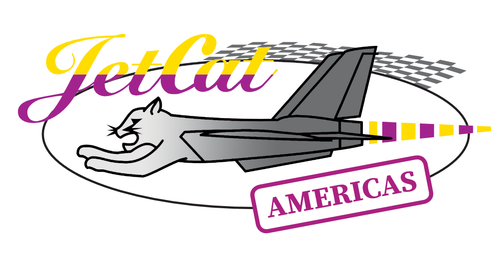PRODUCT DETAILS
LCU Pro v2
The LCU Pro v2 is a modern new type of lighting electronics for model helicopters or model planes. The special feature is that the JetCat ECU controls the switching points and therefore no RC channels are required for the position or anti-collision LEDs. However, the LCU Pro v2 has two RC inputs for a possible control of the headlight outputs. If the LCU Pro v2 is used in a model without JetCat Engine, the entire control of the LCU Pro V2 functions can be realized via the two RC inputs. The JetCat ECU (as of V.6.00Q) has full "access" to the LCU Pro v2, some engine warning and Engine status functions (e.g. tank capacity at lower limit, failsafe display, Engine battery voltage at lower limit) can be displayed via the lamps on the model. The connection of the LCU Pro v2 e.g. to the ECU V6 is done e.g. via the optional LED I/O Interface (order no.: 61168-0000) and a flat data cable. The data cable transmits the switching points to the LCU Pro v2 and supplies it with the necessary supply voltage, i.e. the power is supplied by the Engine battery, so that the voltage of the Engine battery is monitored. Furthermore the LCU Pro v2 has 12 outputs for the connection of the model-specific lamps. With our GSU, various flash patterns and other parameters can be conveniently set and stored directly on the LCU Pro v2. After the successful installation in the model, various functions can be checked via our HSE in the "Test-Functions- Menu" on the ECU. Furthermore, the LCU Pro v2 can be connected directly to a PC via USB Interface (Art-Nr.: 61109-0010) and can be easily programmed with the PC program "LCU Pro(gTool)v2" (Service Downloads JetCat website) with many other possibilities.
General features:
- 2 independent RC inputs
- All RC - inputs galvanically isolated with optocouplers
- 1 input for control/power supply of LCU via JetCat - ECU v6
- 1 input for control/power supply of the LCU via a JetCat - ECU v10 and higher
- 12 outputs; 12 multifunction, output 11 and 12 can be set as "Afterburner Automatic switching to the current corresponding to the function
- 10x 1W - emitter connectable
- 2 independent Afterburner rings can be connected directly (regulated at 6.6V)
- Each (light) output has a control LED
- Switches on and off with RC or ECU, no switch necessary
- Battery connection via MOLEX plug for RC operation
- In ECU operation the voltage can be obtained from the Engine battery
- Each output function can be freely assigned to an RC input
- Extensive setting and combination options with the JatCat GSU
- Software can be updated by the user
- Automatic recognition of RC or ECU mode
- In the ECU mode the switching on of the speed cameras, the position lights etc. and the Afterburner is controlled by the ECU. Battery undervoltage, empty tank or failsafe is indicated by the lamps.
Operation with ECU (ECU mode):
If an ECU is connected, the LCU recognizes this automatically and switches the control of the speed cameras, the position lights and the Afterburner outputs to commands from the ECU.
When the ECU is switched on (depending on its software status), if an LCU is found,
"LCU Pro v2"
reported to H.I.S. The ECU then takes over control of the LCU Pro v2. Signals from the receiver are now no longer passed on. Only the signals for the RC signals specified by the user are still switched on and off in normal operation via the programmed RC switching points (exception: warning function).
When the Engine is started, the outputs that were programmed as speed cameras are switched on. The speed cameras are in operation all the time up to and including aftercooling. When the Engine is started and the pilot has control of the throttle, the outputs that have been programmed as position lights are switched on.
They are switched on during normal operation:
- the speed cameras
- the position lights.
Additionally, either the Afterburner outputs A12 or A11 are switched:
If the Afterburner outputs A11 + A12 have been activated (also continuous light)
On a JetCat Jet engine:
If the stick position is set to "full throttle" and the Engine has reached maximum speed, the Afterburner outputs A11+A12 are switched on. When the throttle stick is taken back, the Afterburner outlets are switched off again.
If the Afterburner outputs A11 + A12 were deactivated
On a JetCat turboshaft engine:
If the Engine speed drops 4000 rpm below the Engine speed programmed in the Limits menu of the ECU (higher rotor load), output A10 is switched off as a warning, if the main rotor speed (actually 4000 rpm before final speed) is reached again, output A11 switches on again. As an optical control function for the emptying tank, the position lights are switched off for 5 seconds every 30 seconds when the tank warning function set in the ECU is reached.
Should a fail-safe or empty Engine battery occur during flight, outputs A1-A10 are switched to a fast, clearly visible flashing as a warning signal.
If the Engine is switched off, the position lights go out and the speed cameras remain switched on until the end of the aftercooling.
When the aftercooling is finished, all lights controlled by the ECU are switched off.
Technical data
| Dimensions: | L=60mm; B=45mm ; H=20mm |
| Gewicht: | ca.50 Gramm |
| Weight: | 7,2 – 13.6V, (6 cells NiXX or 2S-LiPo) |
| Power supply: | Via Power-Bus socket or ECU input, max.13.6V |
| Outputs: | 12, thereof 10 current-regulated, 2 voltage regulated |
| Output current Nominal: | ca. 350mA |
| Output current speed camera: | ca. 800mA |
| Inputs: | 4 |
| RC inputs: | 2, galvanically isolated via optocoupler |
| ECU connection: | 2 |




